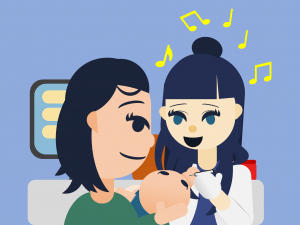Somatosensation
21 Psychological Treatments for Pain
Learning Objectives
Understand how giving patients an accurate understanding of what to expect improves their outcomes.
Understand how distracting people from their pain affects their experience.
Be able to describe how an experiment with hypnosis showed how we can dissociate pain from suffering.
Expectation, or giving patients an ‘accurate’ understanding of what to anticipate from treatment, is shown to improve their outcome in relation to pain relief. In an article written by Jennifer M Weiss, M.D. in Psychology Today (2018), it is stated that people expecting complete pain relief are going to be let down if doctors do not manage their patients’ expectations of the outcome. Because of this, complete and total pain relief is not something most patients attain because their expectations may be too high.
Distraction, or thinking about something positive, is also shown to decrease the severity of pain in patients. In an article by Malcolm H. Johnson, “How Does Distraction Work in the Management of Pain?” (2005), he makes an argument that the distraction approach to relieve pain could be looked at as a competition between exogenous and endogenous information processing and that a patient’s perception of pain is suppressed by consciously focused attention to non-painful stimulus or stimuli. However there is a trade-off—the efficiency of the distraction can be affected by the qualities of the distractor, the qualities of the pain experience being suppressed, and factors related to individual differences.

Effectiveness of hypnosis to decrease sensitivity to pain is known as hypo-analgesia. A meta-analysis conducted in 2000 of 18 published studies by psychologists Guy Montgomery, PhD, Katherine DuHamel, PhD, and William Redd, PhD, showed that 75% of clinical and experimental participants with different types of pain obtained substantial pain relief from hypnotic techniques. These findings support the idea that hypnosis is likely to be effective for most people suffering from diverse forms of pain, unless the patient fails to respond to it or shows a strong opposition against it.
Another possible pain treatment may be therapeutic vibrations. Watch the video below and linked here to learn more!
Provided by: University of Minnesota
License: CC BY 4.0
References:
Weiss, J. (2018, December 23). Expectations Instead of Medications: Managing Patient Pain. Retrieved May 27, 2020, from https://www.psychologytoday.com/us/blog/women-in-medicine/201812/expectations-instead-medications-managing-patient-pain
Johnson M. H. (2005). How does distraction work in the management of pain?. Current pain and headache reports, 9(2), 90–95. https://doi.org/10.1007/s11916-005-0044-1
Hypnosis for the Relief and Control of Pain. (2004, July 2). Retrieved May 27, 2020,
from https://www.apa.org/research/action/hypnosis
Olman, C. A. (2017). PSY 3031 Outline. Retrieved May 27, 2020, from http://vision.psych.umn.edu/users/caolman/courses/PSY3031/

